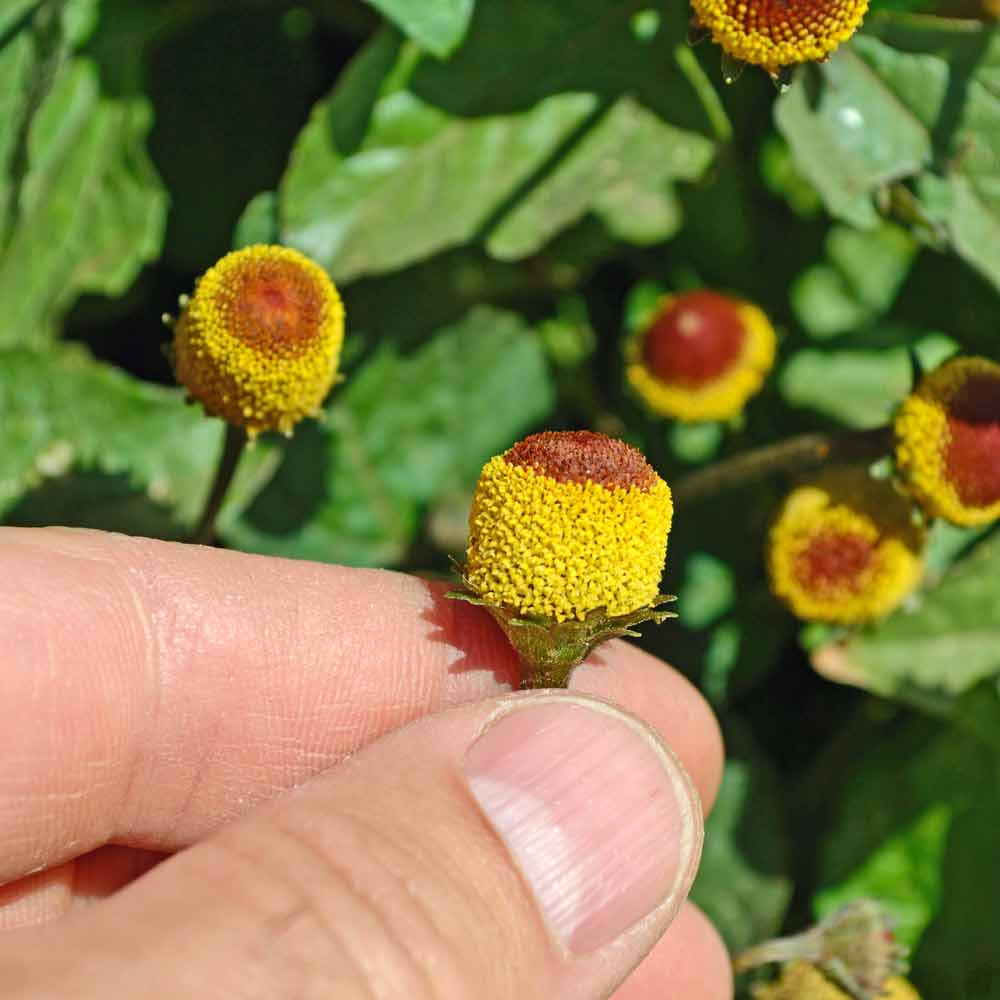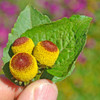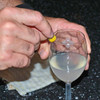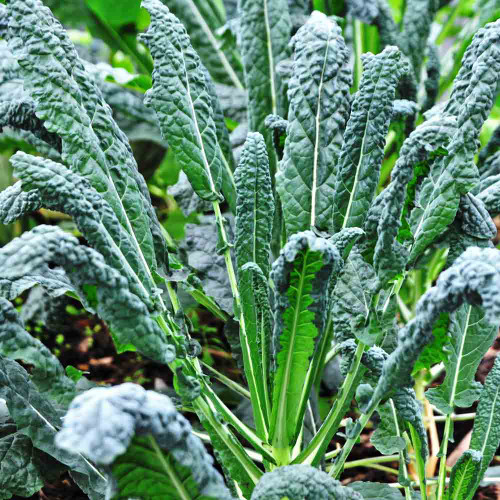Description
Szechuan Buttons – Effervescent, Champagne-like Zing
These bright yellow and red gumdrop-shaped flowers offer a memorable experience no other herb can provide. Prepare to be captivated by a flavor that seizes your taste buds and stops you in your tracks.
As you take the first bite of the bud, you will notice a burst of surprising juiciness that floods your taste buds. The flavor is slightly sour, in an intriguing way. As you savor the taste, a mild and pleasant tingling sensation starts to emerge.
Just as you begin to adjust to the tingling, an effervescent, champagne-like zing starts to dance around your mouth. The bubbles are so light and airy that they seem to carry the taste and aroma of the bud with them. The sensation is both refreshing and invigorating.
As the zing slowly dissipates, you will notice a surprising yet welcome numbing, cooling effect that spreads throughout your mouth. It's like a gentle breeze blowing through your taste buds, leaving behind a fresh and revitalizing sensation. The combination of all these flavors and sensations is truly unique and unforgettable.
Once you've experienced it, you'll never forget the multi-sensory experience it provides, whether in food or drink.
Also known by the names of toothache plant, paracress, buzz buttons, electric daisy, Sansho Buttons, tingflowers, eyeball plant, peek-a-boo plant, jambu, and spilanthes.
Details
Spilanthes is in the Asteraceae family, along with daisies, dahlias, marigolds, sunflowers, zinnias, asters, chamomile and chrysanthemums but acts nothing like the rest of the family with its trademark tingly numbing effects.
It is a short edible flowering plant that grows to about 12-15” tall, readily bushes out and can easily spread 30” or more, forming dark green leafy mounds. Leaves are wavy with slightly serrated edges and raised veins, with mid to dark green coloring, darker on the top surface and lighter underneath.
First flowers usually appear in mid-June with individual stalks rising above the leaves showcasing a dark red button that elongates into a bright yellow outer ring with a red center, showcasing the “gumdrop” or “eyeball” nicknames. Flowers often reach 1/2” in diameter and 1” long.
Flowers repeatedly from early summer through fall, being most prolific during the heat of summer, only slowing down in mid-September as cooler morning temperatures arrive.
Mostly grown as an annual in North America but is perennial in tropical climates. Grows successfully in almost any growing container or garden as long as it is warm – does not tolerate cold, even a light frost will stop flower production.
History
Ethnobotanists believe spilanthes is most likely native to Brazil and spread throughout South America by pre-Columbian trade. Post-Columbian plant collecting and trade introduced spilanthes to Africa, India, the Caribbean, and parts of Asia where it has naturalized to become a deeply ingrained part of local cultural uses, both medicinally and culinary.
Uses
The leaves and flowers have been used for centuries as a medicinal agent for toothache, throat, and gum infections. The leaves and flower heads, particularly the young buds, contain a natural bioactive alkaloid – spilanthol – that acts as an analgesic and an antiseptic that numbs the tongue and gums and increases the production of saliva.
Freshly picked leaves are traditionally used as a seasoning or flavoring in salads, soups, and meats in Brazil as well as India.
Has natural antibacterial and anti-fungal properties, efficacy against malaria is well documented. Spilanthol, the main chemical compound, is an effective anti-parasitic.
A mouth rinse of spilanthes extract can be used daily to promote gum health. In vitro testing has shown that the plant’s extract has a strong effect against E.coli, pseudomonas, salmonella, klebsiella pneumonia, and staphylococcus albus, as well as inhibiting the growth of candida albicans.
Opera singers use a rinse of the flower extract to keep their mouth and throat moistened during performances.
Over the past few years, Szechuan buttons have become the darling of fusion food chefs and avant-garde bartenders wanting to push the envelope and give their clients a sensory experience that goes beyond just taste. They’re being used for everything from dipping salts to sprinkling onto raw fish to garnishing cocktails to adding snap to desserts.
Chef Bruce Kalman of Union in Old Town Pasadena uses the flowers in a beet ravioli dish, saying, “The Szechuan buttons fit in perfectly with the vibrant spring pasta, fava beans, peas, horseradish, and carrot broth, lending a fizzy sensation with a peppery, floral finish. It’s kind of like the 6th taste and definitely leaves a lasting impression.”
Mariena Mercer, the chief mixologist at The Cosmopolitan in Las Vegas, created “The Verbena,” the most widely ordered cocktail at the revered Chandelier Bar, even though it wasn’t initially listed on the menu.
This “exotic margarita” is made with a variety of citrus juices, tequila, a house-made ginger syrup, and a garnish of Szechuan flower.
“The cocktail itself is designed around the effects of the flower,” she says, and advises “chewing the button slowly and making sure all parts hit your tongue” before tasting the drink. “After eating the buzz button, all the flavors are highlighted and intensified. The citrus becomes almost electric and the ginger adds the perfect spice to the cooling sensation that the spilanthol imparts.”
Growing Tip
Szechuan buttons are quite happy growing in containers at least 8-10”. Full sun to partial shade is fine, but avoid over-watering – soil should only be slightly moist.
Because they are tropical natives, starting inside and transplanting or taking the container outside once the weather is above 70°F is best.
Harvest Tip
Even growing one plant that is a foot tall and 15” in diameter will give you a shocking amount of buds all season long. The buds can be harvested as soon as they are round, or let them mature for a stronger flavor and effect. Harvest leaves like a cut-and-come-again lettuce or spinach, taking a few at a time every few days.
Flowers and leaves are best used fresh, but can be frozen for short-term storage at the end of the season.
Learn More
- Szechuan Buttons or Toothache Plant - Rock Star of the Garden Learn about the secret ingredient of Celebrity Chefs and Master Bartenders!
- Szechuan Button and Mango Sorbet
From the soil to the seed to the food you eat - we'll help you grow your best garden!
3 Reviews
-
Toothache plant seeds
I have ordered these before which grew into. LOVELY INDOOR plant. Then I killed it placing it in the hot LAS VEGAS SUN for only a couple of hours. Unable to recover it, so I’m trying it again!
-
Szechuan buttons/Toothache plant = mind-numbing fun
Every seed germinated of this foodie focused favorite. Grew in an outdoor planter and the hearty plant survived all sorts of climactic challenges. The tiny gumdrop flower packs an amazing punch and you will either be endeared and revered, or a pariah for having your friends taste/eat one of these flowers. The numbing of the tongue is tart and electric. Use to garnish cocktails, or as a pre-dessert to perk up and perk out taste-buds. The buds freeze well too so you can save some for future dinner parties.
-
Beautiful
I've purchased these seeds several times. They never disappoint. Beautiful plants with sweet flowers that last. I'll continue to plant them but closer to the house so I can enjoy them more.













